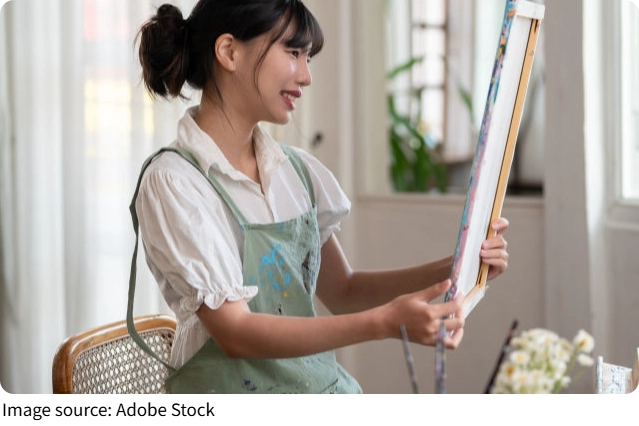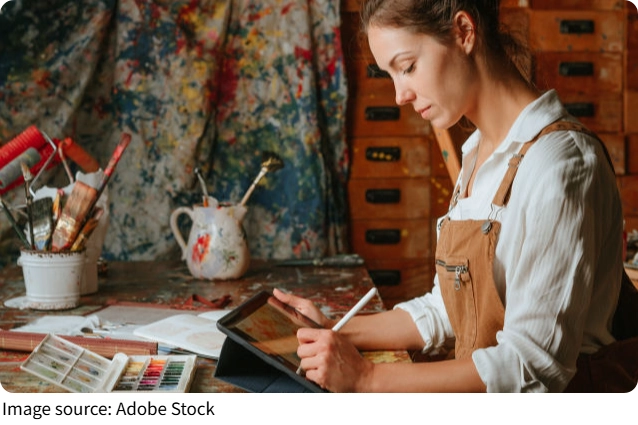Art Women

When we think about art history, many famous names come to mind. Yet, the impact of women artists often remains less talked about, even though their work has greatly influenced different styles and periods.
Today, we invite you to join us as we explore how women have shaped the art world with their unique creativity, skill, and vision.
From ancient times to the modern day, their contributions have added rich layers to the history of art, and understanding their stories helps us appreciate art more deeply.
Ancient and Traditional Art by Women
Women's artistic talents have been present since ancient times. In many early societies, women created pottery, textiles, jewelry, and other crafts that played an important role in daily life and cultural expression.
These were not merely practical objects; they often featured intricate designs, patterns, and symbols that told stories or carried special meanings.
For example, in ancient Egypt and Mesopotamia, women were involved in making decorated ceramics and woven fabrics that reflected their community's traditions. These artworks show us that women's creativity was essential even when formal "art" as we think of it today was not yet defined.
Women in Painting: Unique Styles and Techniques
Moving into the world of painting, women artists developed distinctive styles that have become part of art history's foundation. One great example is Mary Cassatt, an American painter who worked mainly in France during the Impressionist movement.
Her paintings often focused on intimate scenes of mothers and children, using soft brush strokes and gentle colors to capture tender moments. Cassatt's work opened doors for new ways to represent everyday life with warmth and sensitivity.
Similarly, Berthe Morisot, another leading Impressionist, used light, airy brushwork to depict fleeting moments, such as social gatherings or outdoor scenes. Her approach brought a fresh energy to painting, balancing detail with softness. These women proved that their artistic voices could stand alongside their male peers, offering new perspectives that enriched the art world.
Sculpture and Design Contributions
While painting was a common medium for women, many also made important contributions to sculpture and design. Sculpture was often considered a male-dominated field due to the physical demands involved, but artists like Camille Claudel challenged this norm.
Claudel's expressive sculptures, many in bronze, conveyed strong emotions and complex human relationships. Her work combined technical skill with deep personal storytelling, influencing future generations of sculptors.
In design and decorative arts, women created functional objects with artistic beauty. Ceramics, textiles, and jewelry often show the marks of female artists who combined creativity with craftsmanship. These contributions highlight the diverse ways women shaped the visual environment beyond traditional painting and sculpture.

Women in Modern and Contemporary Art
The 20th century brought many changes to the art world, and women continued to be at the forefront of innovation. Georgia O'Keeffe, for instance, became famous for her large, close-up paintings of flowers and landscapes. Her bold use of color and abstraction brought a new dimension to American modern art, influencing both artists and audiences.
At the same time, Louise Bourgeois used sculpture and installation art to create immersive experiences. Her works often explore complex themes and invite viewers to engage emotionally and intellectually. These artists show how women expanded the possibilities of art, using new materials and forms to communicate.
Participation in Art Movements
Women were active in many important art movements. From Impressionism and Modernism to Abstract Expressionism, their involvement brought fresh ideas and techniques. For example, Lee Krasner was a key figure in Abstract Expressionism, known for her energetic and large-scale paintings that balanced spontaneity with control. Such artists helped push artistic boundaries and change how art was understood.
Their participation ensured that these movements included a wide range of voices and approaches, making art history richer and more complex.
Why Recognizing Women's Artistic Contributions Matters
Recognizing women's role in art history gives us a more complete and diverse picture of creativity across time. Their work adds variety in style, subject, and technique, helping us appreciate the many ways people express themselves through art.
Museums, galleries, and art education are increasingly highlighting these artists, making it easier for all of us to explore and enjoy their creations.
Appreciating women's art allows us to see the full story of human creativity, beyond the traditional focus on a few well-known male artists.
Explore Women's Art and Get Inspired
If you love art or want to learn more, we encourage you to explore works by women artists from different periods. Visit exhibitions or search online to discover new favorites — you might be surprised by the variety and richness of styles.
Let's Appreciate Art Together
Art is a journey shaped by many talents and perspectives, including the vital contributions of women artists. Their creativity has helped define the course of art history and continues to inspire today. So Lykkers, let's keep exploring and appreciating the beautiful and diverse world of art together.
Four women who helped shape art history | National Gallery
Video by The National Gallery


